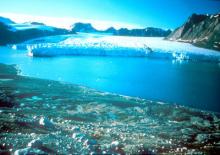T
he Permian-Triassic Extinction Event is the quintessential question in pre-history. In layman’s terms, it’s “what killed the dinosaurs?” Volcanic events, an asteroid collision, even widespread disease and climate change have been used to explain how such a massive species extinction would take place in such a relatively short amount of time. However, new research on a massive scale, of both fossil remains and chemical geological data, shows that something far more insidious could have happened, with large implications for human activity today.The data suggests, according to Wired.com, large die-offs that significantly impact bio diversity on the planet may actually result in further extinctions from other species, and stunt the long-term recovery of bio diversity and species regrowth across the globe. The study, published by paleobiologists from Brown University, Jessica Whiteside and University of Utah, Randall Irmis depends heavily on data from the earth’s carbon cycle during the Permian-Triassic (PT) Event and for several million years afterward. The carbon cycle, which authors explain is the flow of life’s essential elements through the Earth’s various systems, was highly erratic after the PT Event for 10 million years. Rather than rebounding as life filled niches previously occupied by extinct species, there was a long cycle of “boom-and-bust” as species proliferated, and then died off, in cyclical waves.
One plausible explanation, the authors say, is that a spike in volcanic activity immediately after the PT Event that may have killed off enough localized species around the world that it triggered this “boom and bust” cycle simultaneously across many biomes even as species attempted to revitalize. With the dramatic reduction in diversity and complexity, comes a dramatic reduction in a biological system’s ability to weather destructive forces. The notion, which is relatively new within this field of science, is nonetheless accepted by biologists, economists, and computer engineers the world over. If a system does not have enough complexity, then they are essentially lacking in fail-safes, niche elements that allow for a variety of paths to success, profit, or survival (depending on your subject).
This has huge implications for the well-documented destruction of bio-diversity across the planet created by human demand for resources. Our over-ished oceans are already seeing this strange boom-and-bust pattern among jellyfish, as they thrive and then die off in massive numbers. Should human activity continue to create nomocultured biomes in agricultural environments, decimated oceans, and dislocated species’ populations across large swaths of natural landscape, we will begin to see these devastating effects of mass extinctions and low biodiversity. The only difference this time around is that the volcanic activity that was so damaging to life on Earth is now replaced by human demand.
